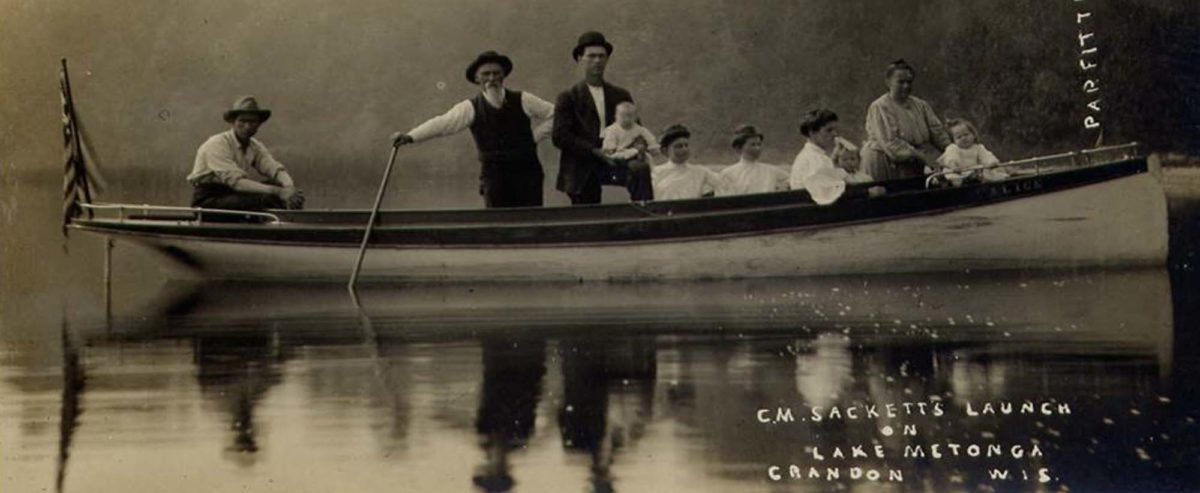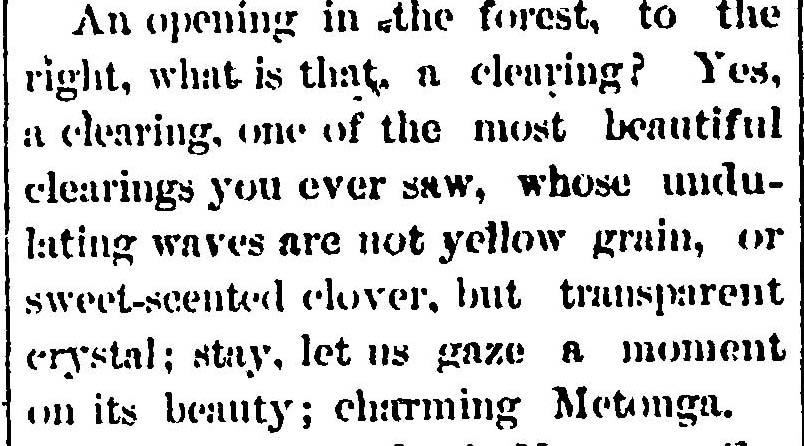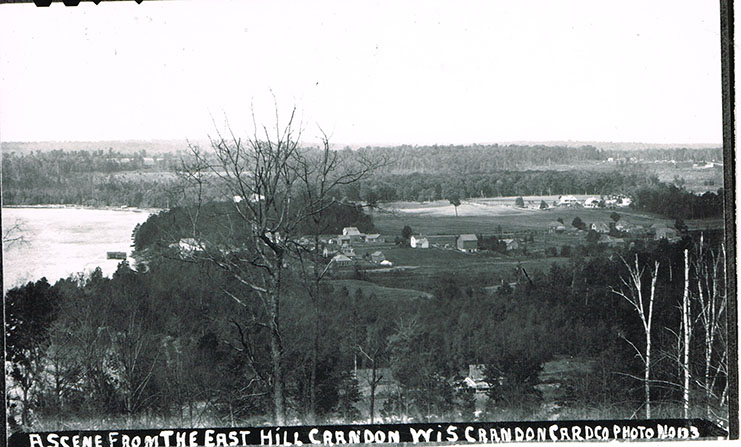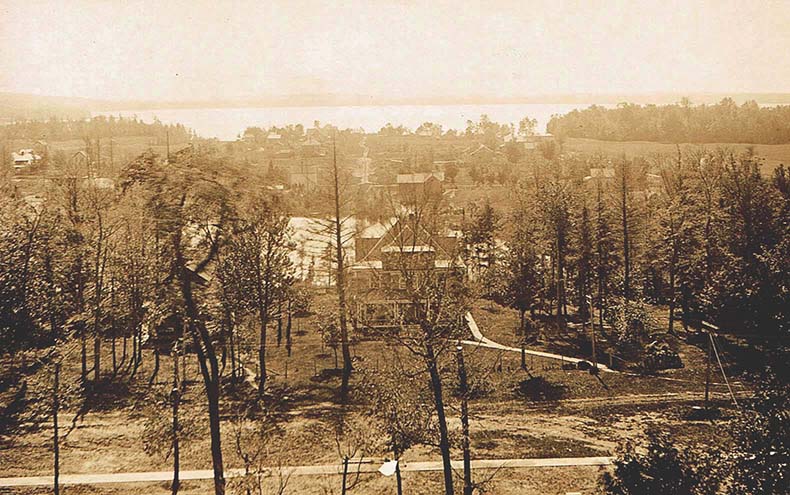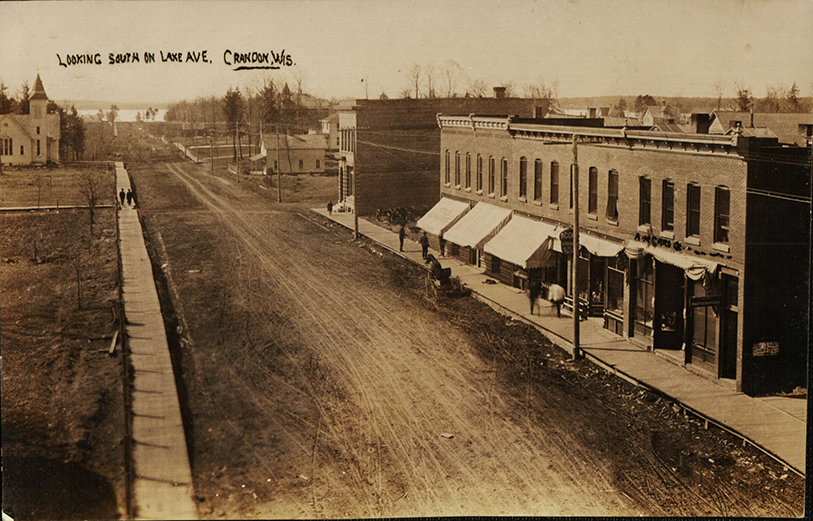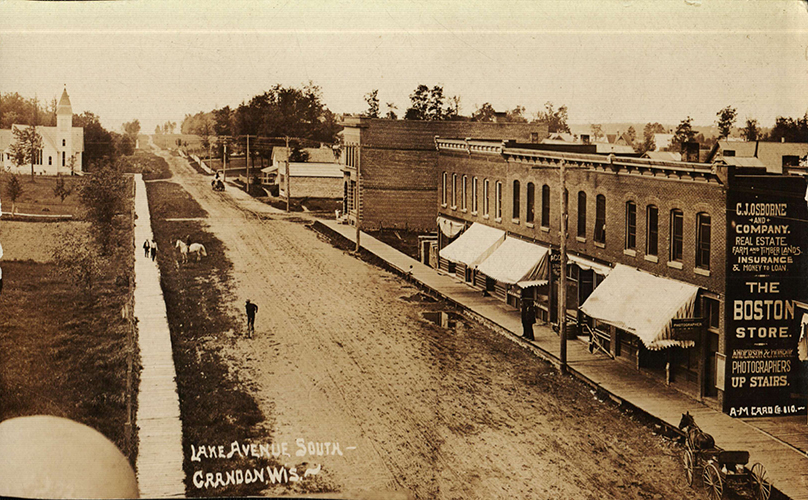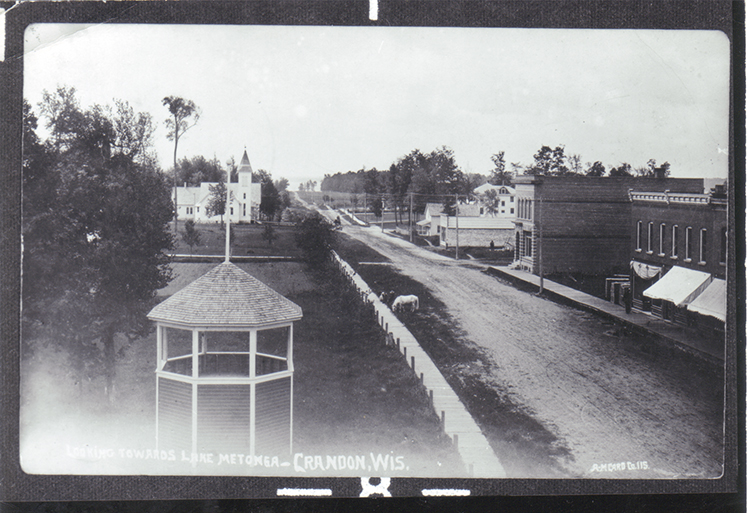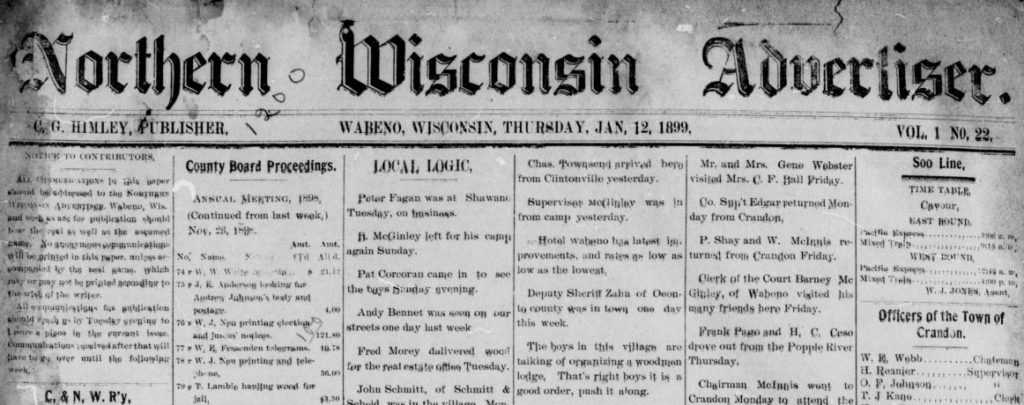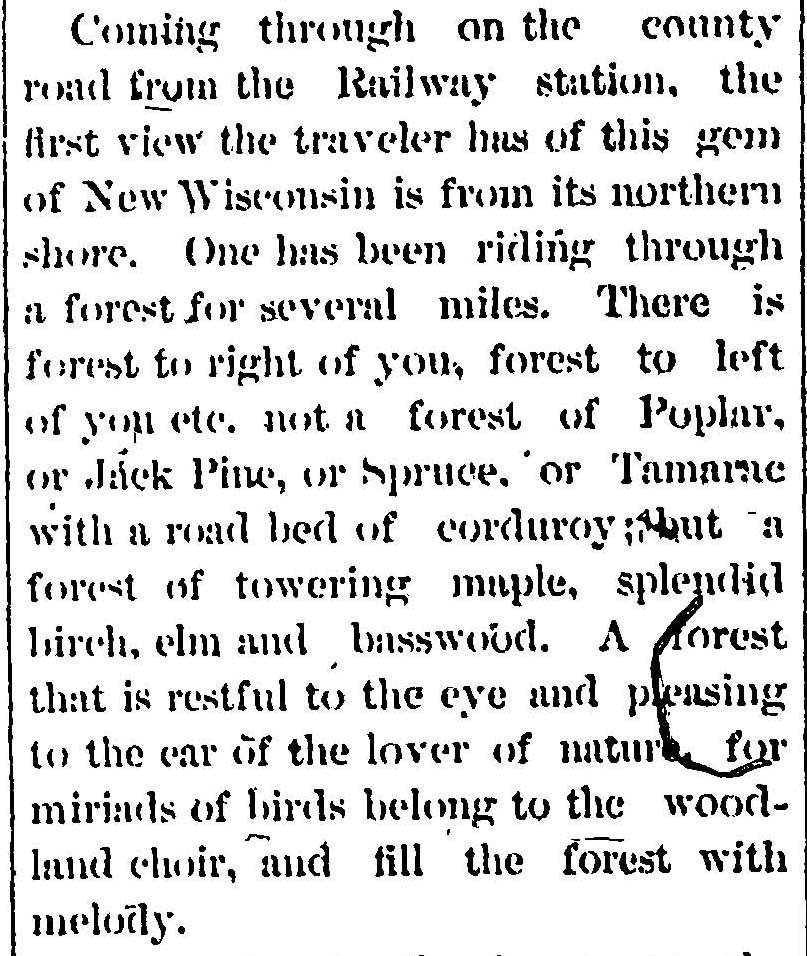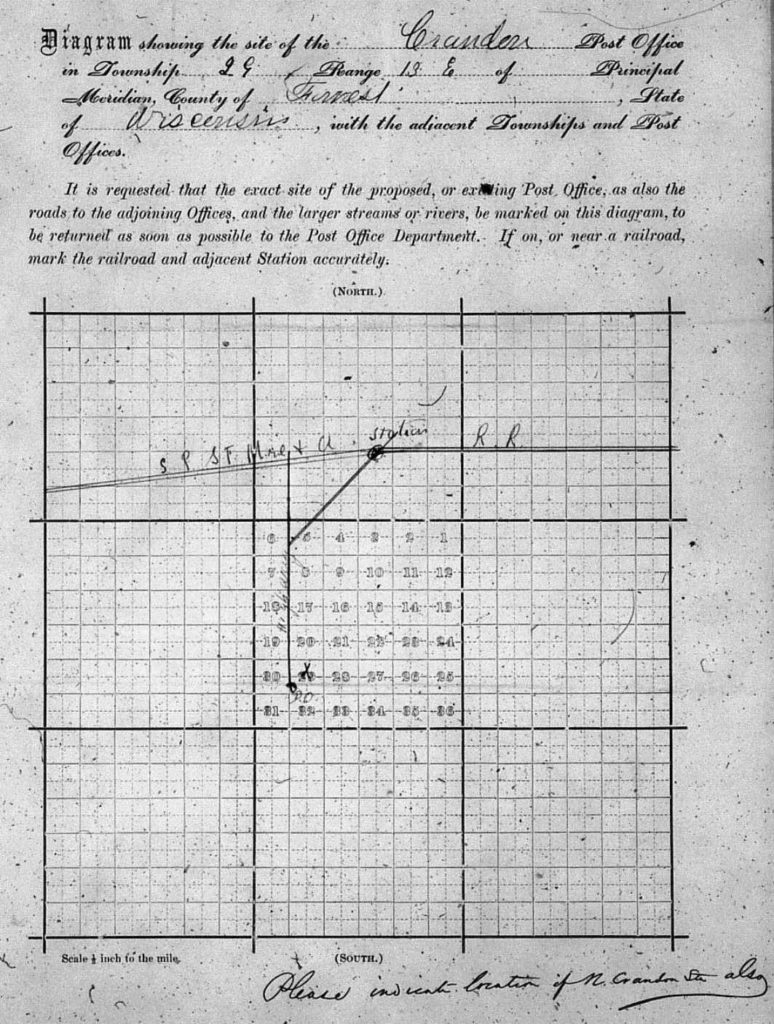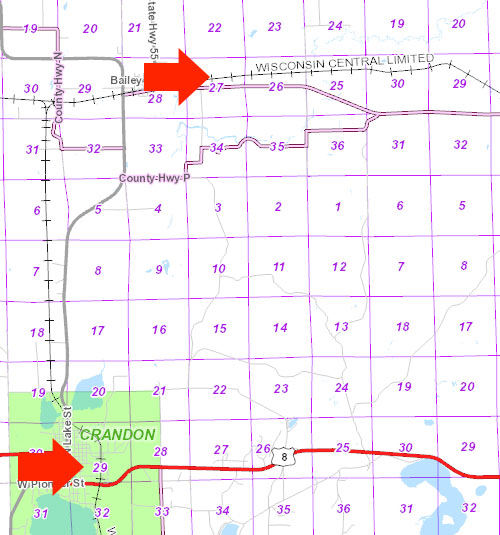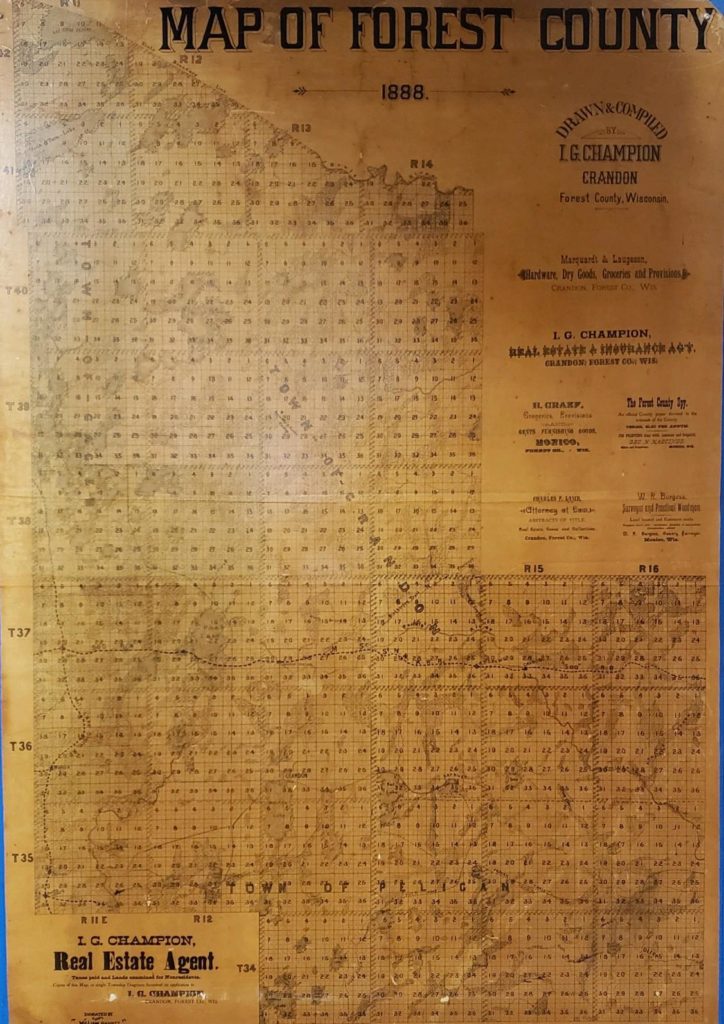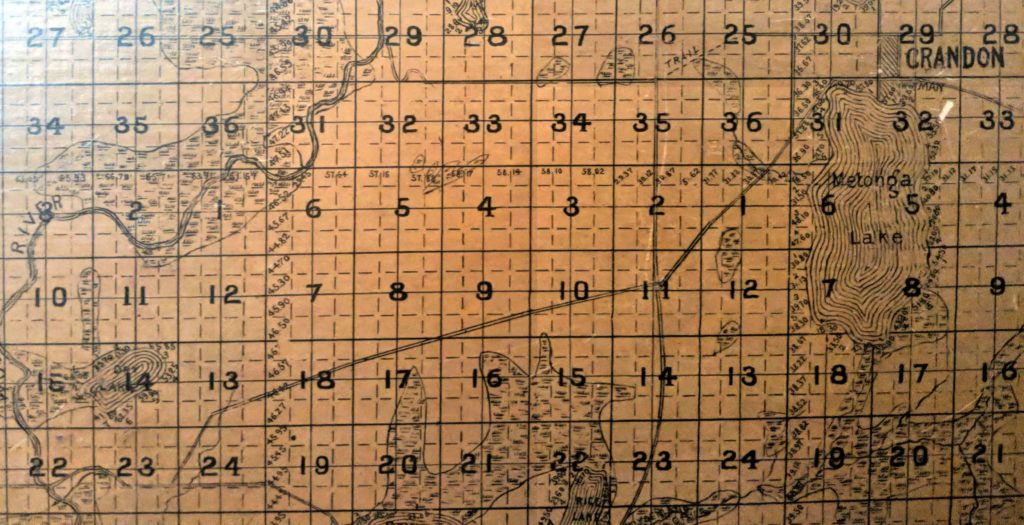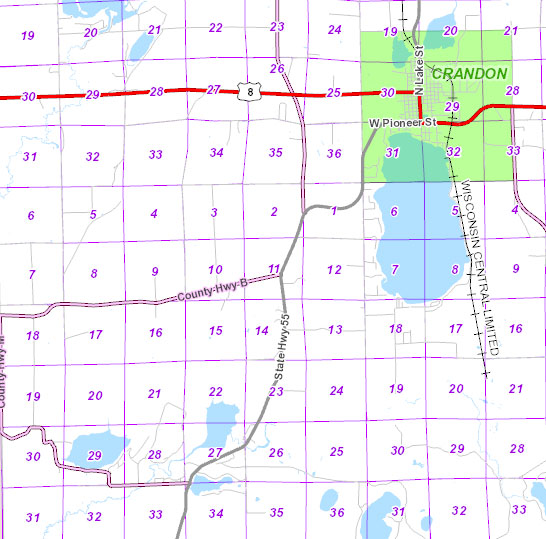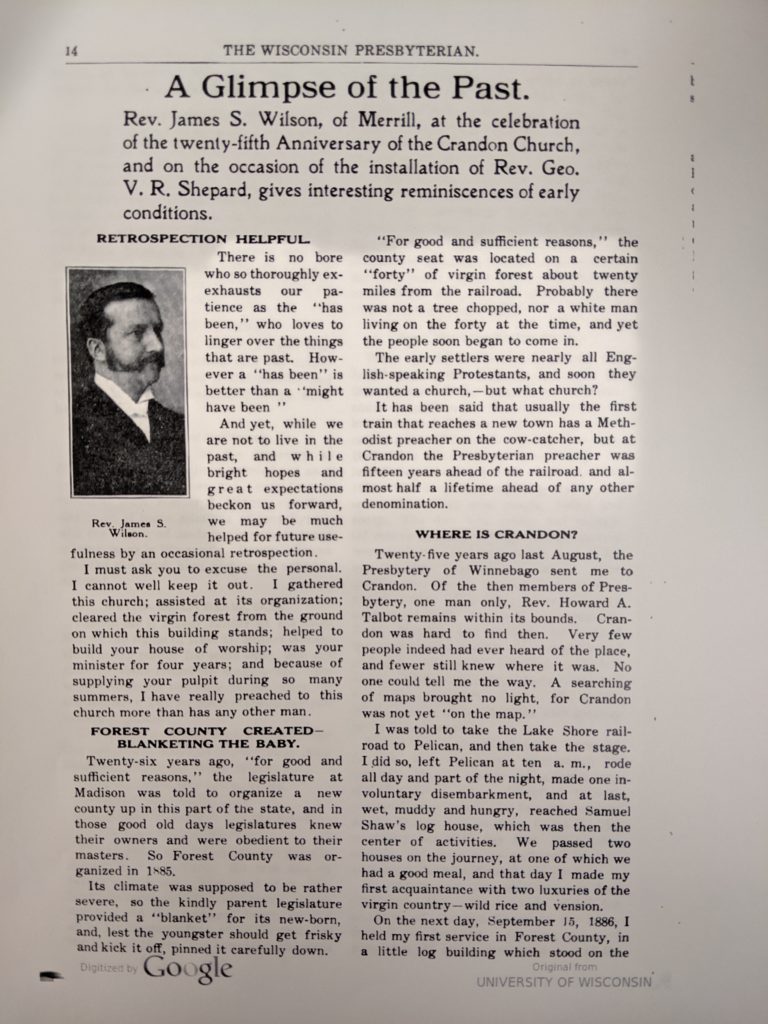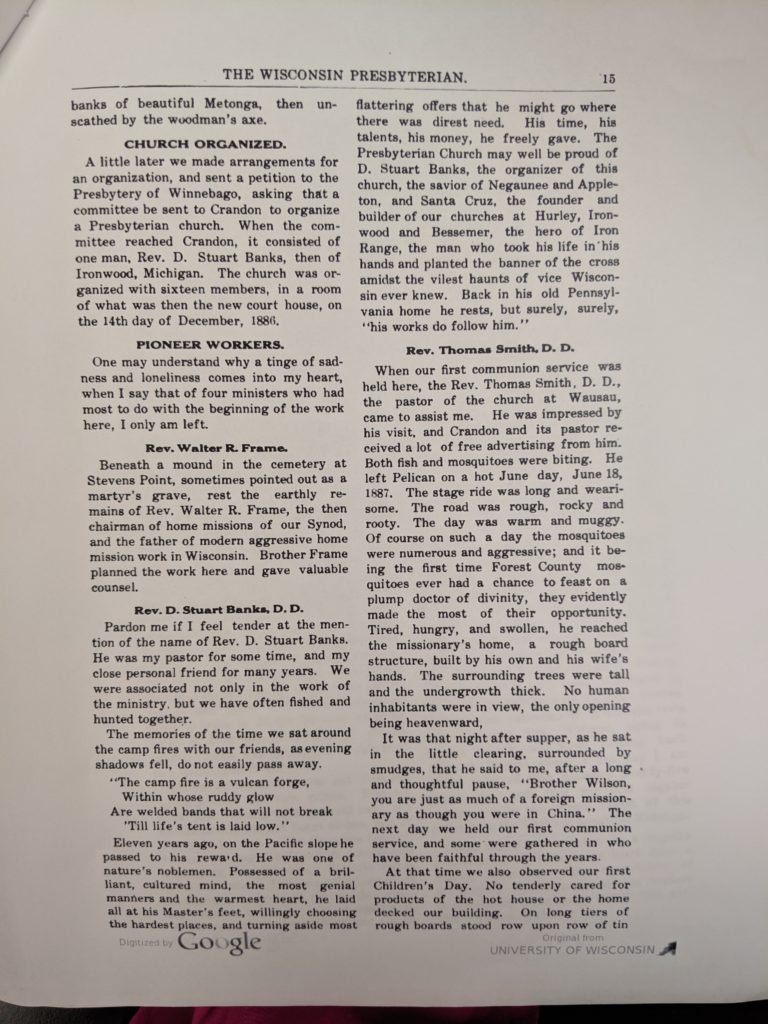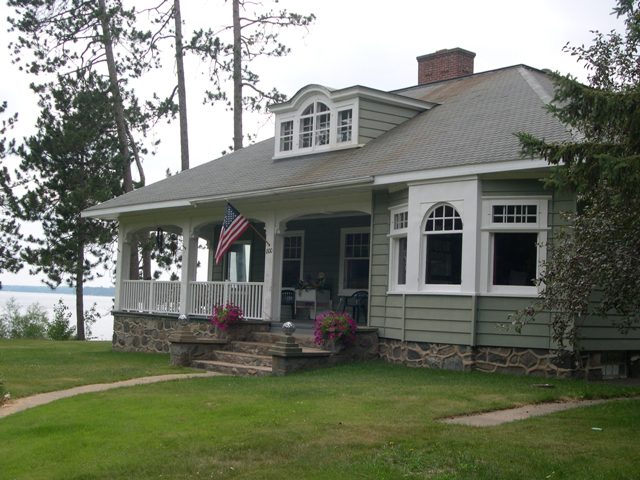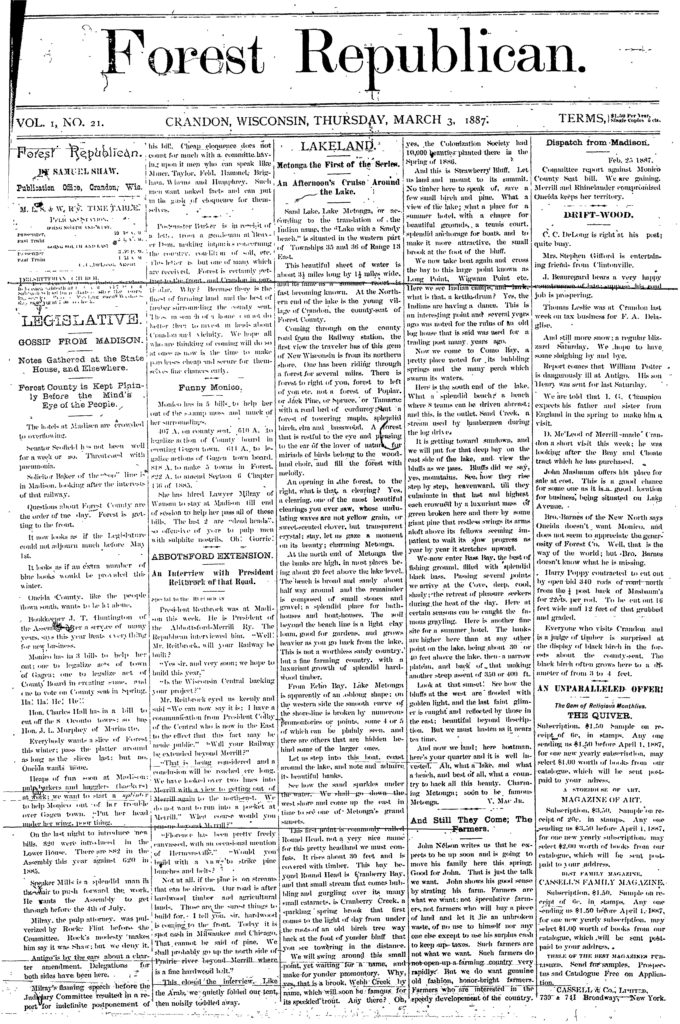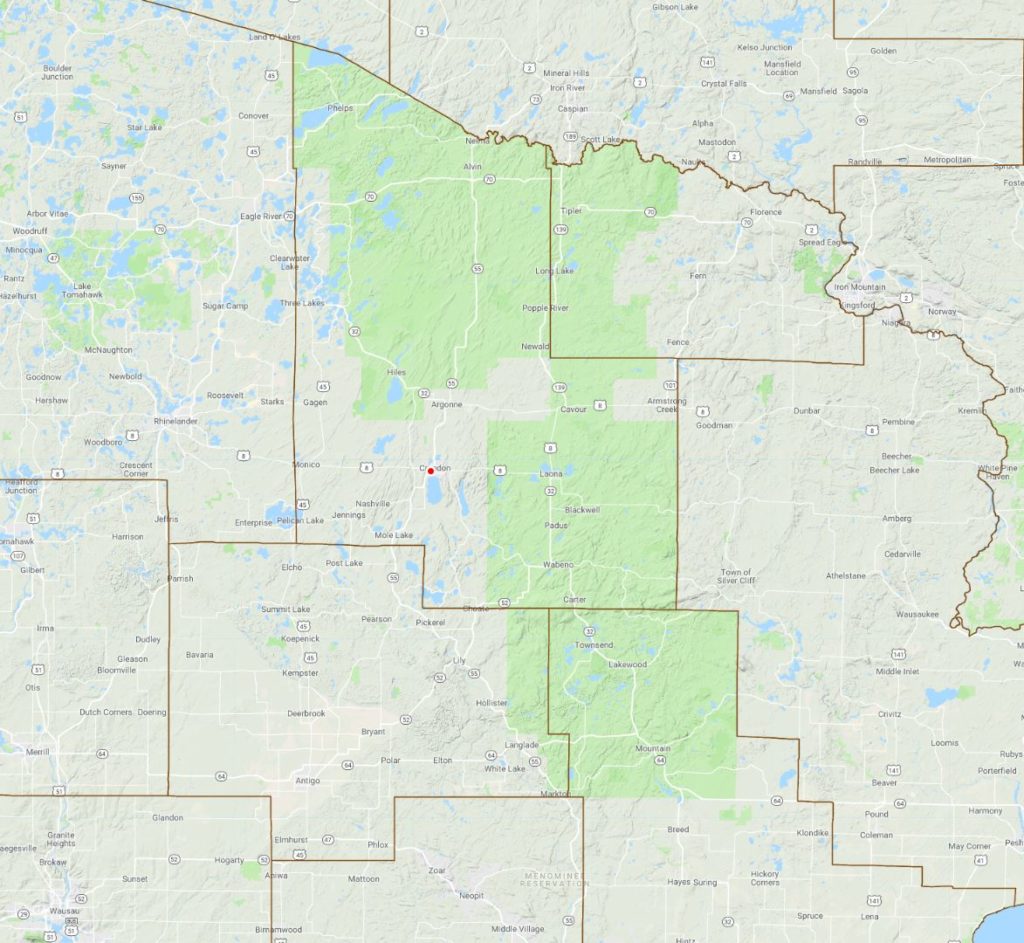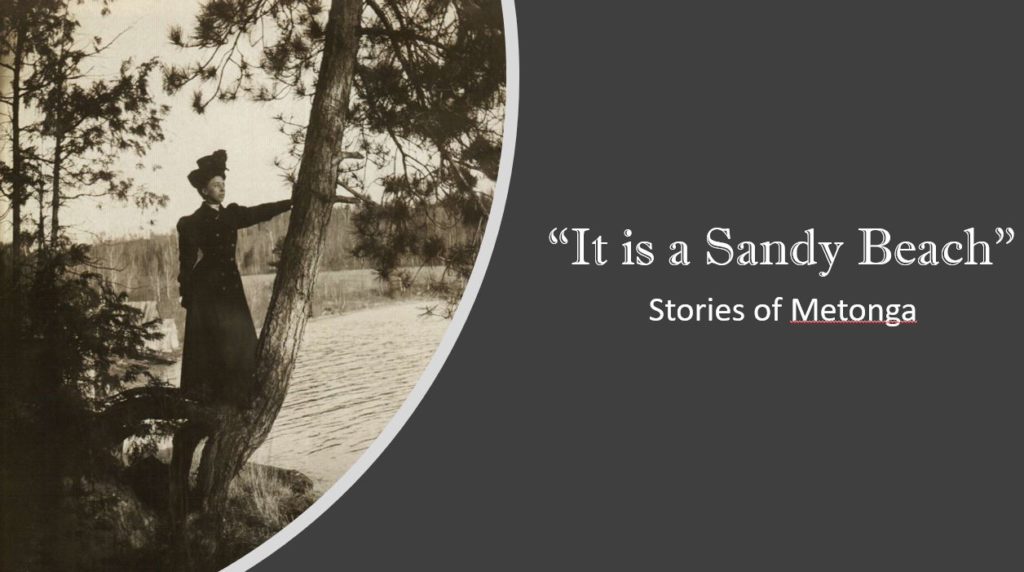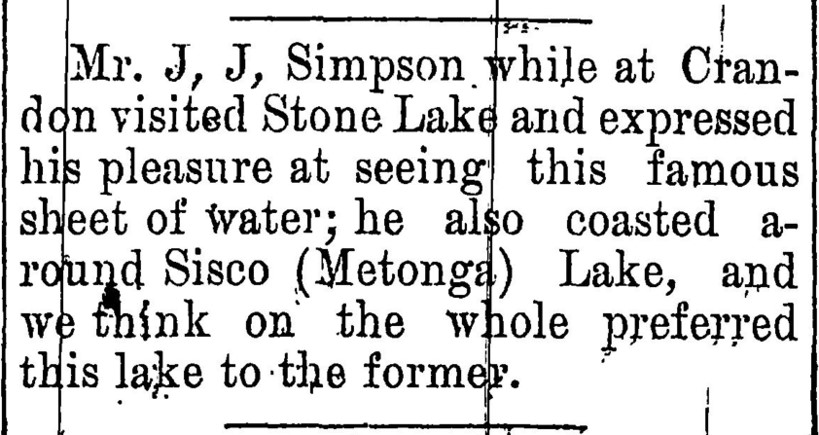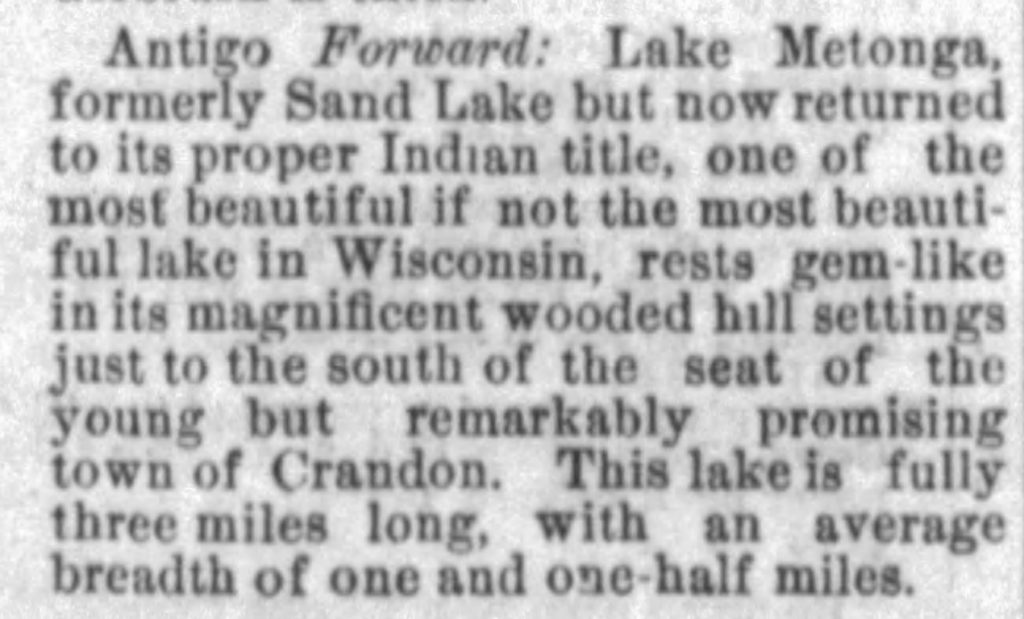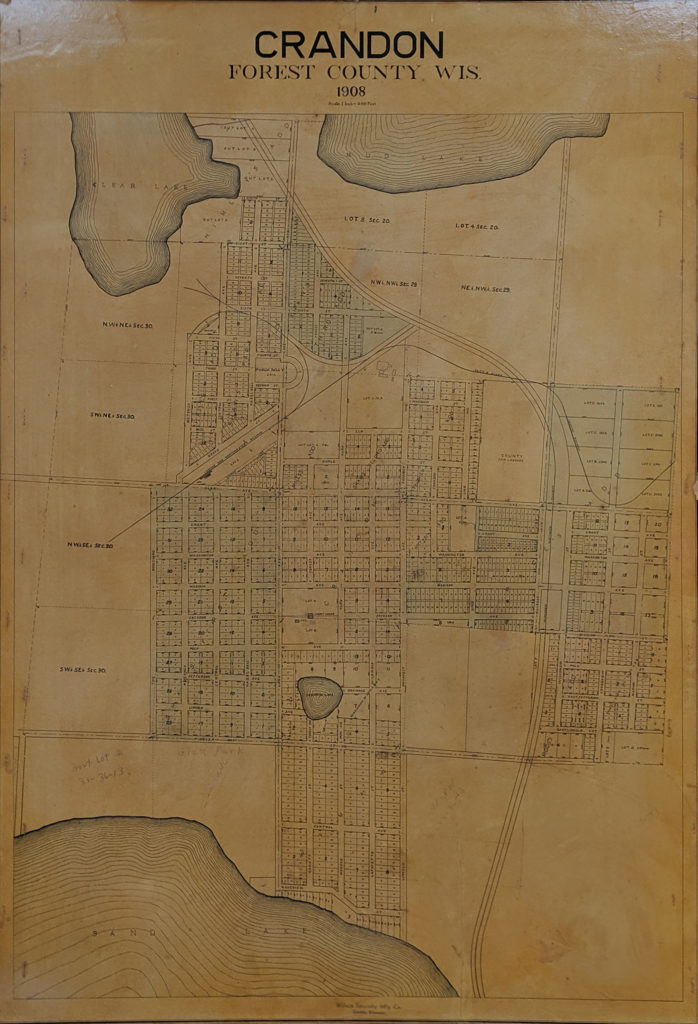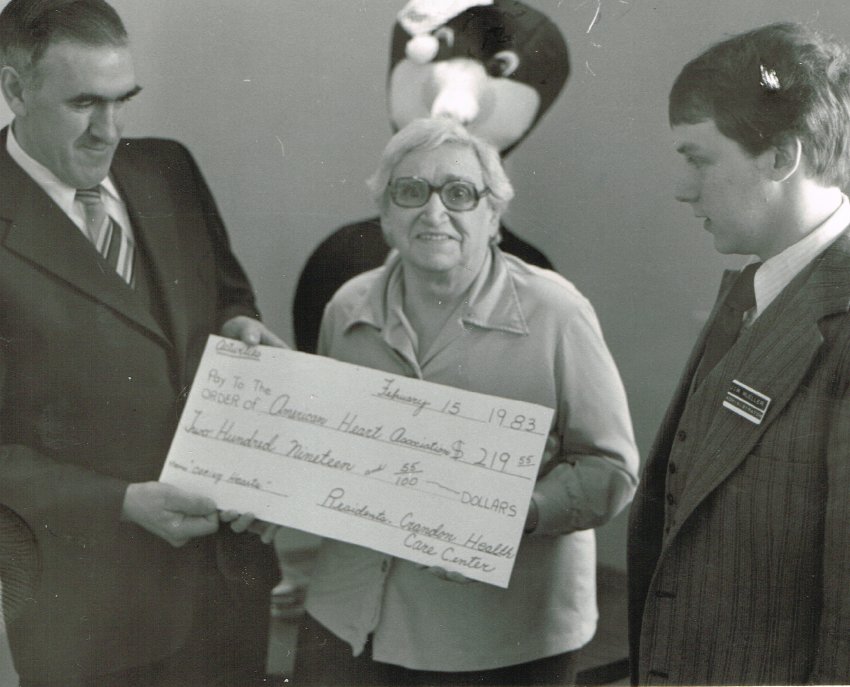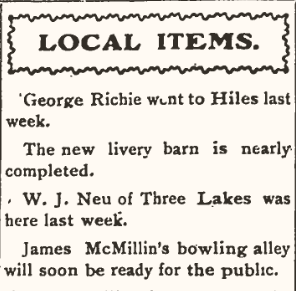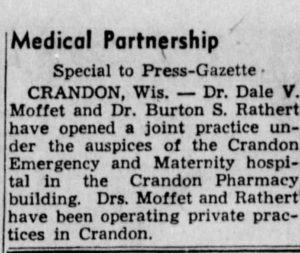Good morning folks. Sorry for the bit of delay this week. It’s been a bit busy here – I have been planning for additional History on Tap programs, planning for the Historical Society’s annual meeting and working on lesson plans for the upcoming Centennial Club. (Stay tuned on details for all of these!)
This week’s visit to Metonga begins at the North End of Metonga “where the banks are high, in most place being about 20 feet above the lake level”.
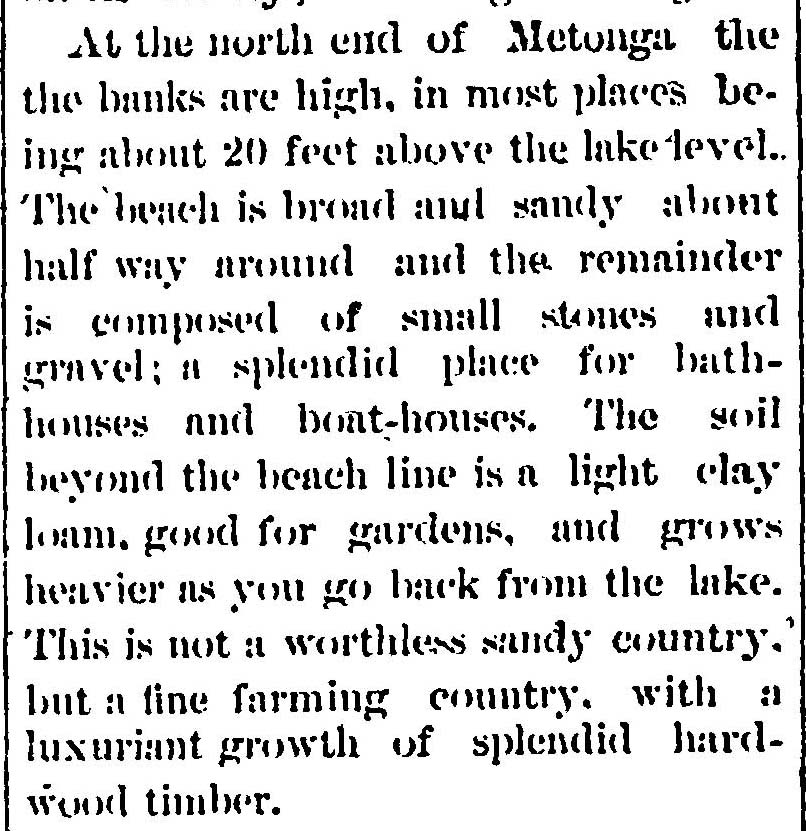
The Historical Society has quite a few photos of the North End of Lake Metonga in its collection.
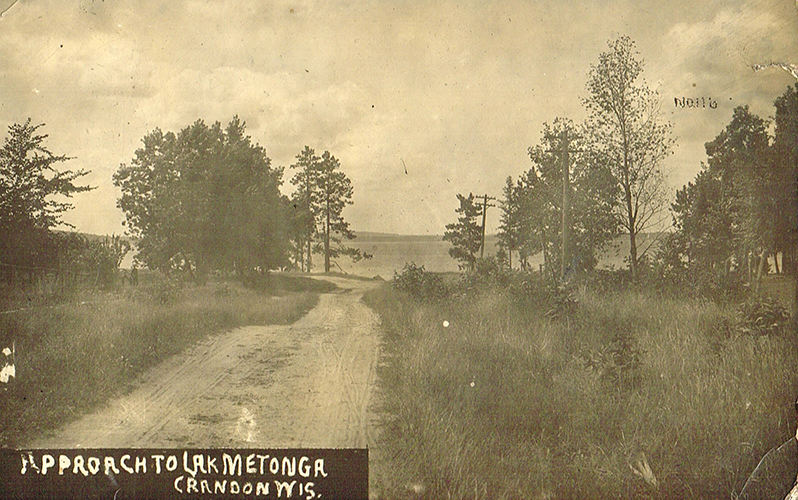
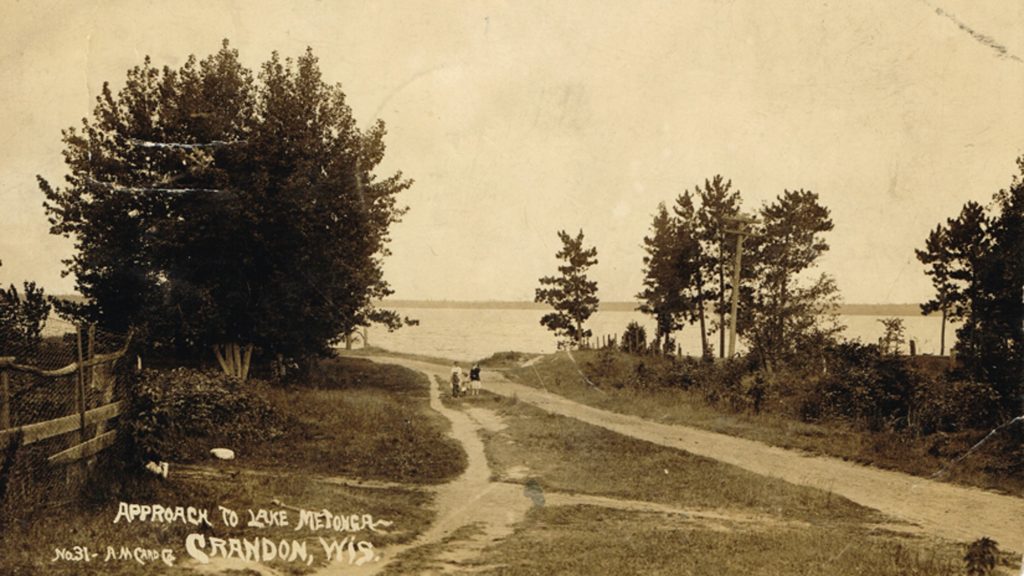
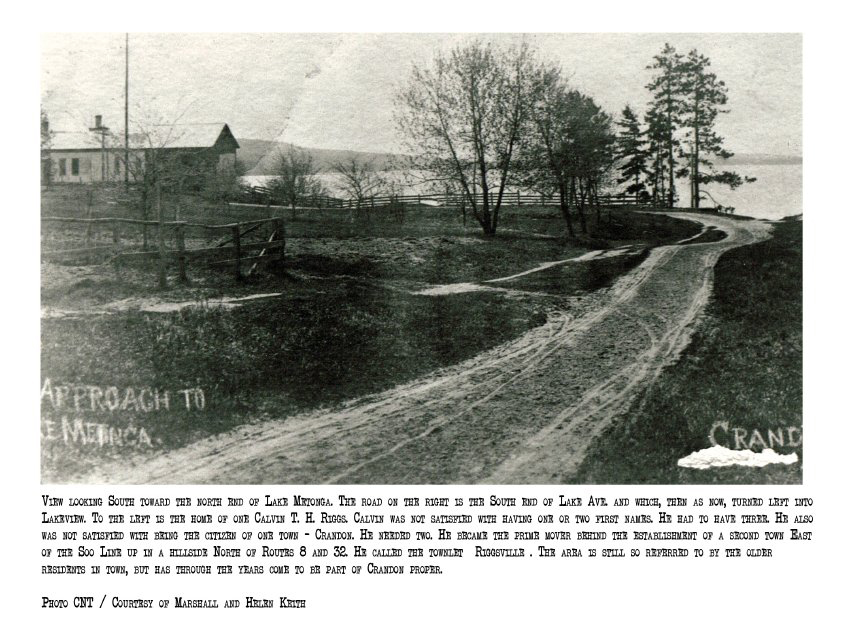
The City Hall photo collection photo, pinpoints the location of the original homestead of C.T.H Riggs, one of Crandon’s earliest businessmen. A biographical sketch of C.T.H. is not necessary as his obituary, published on June 10, 1926 in the Forest Republican, paints a picture of a dedicated father, teacher and Crandon booster. A photograph of Mr. Riggs can be found in the City of Crandon first Council meeting. He is identified as the bearded gentleman sitting in the front row with his hand on the Mayor’s desk. It was Mr. Riggs’ daughter Melvina, a school teacher, who conducted the early Crandon history project mentioned in blog post #3. I believe descendents of C.T.H. Riggs still own the Lake Metonga property identified above.

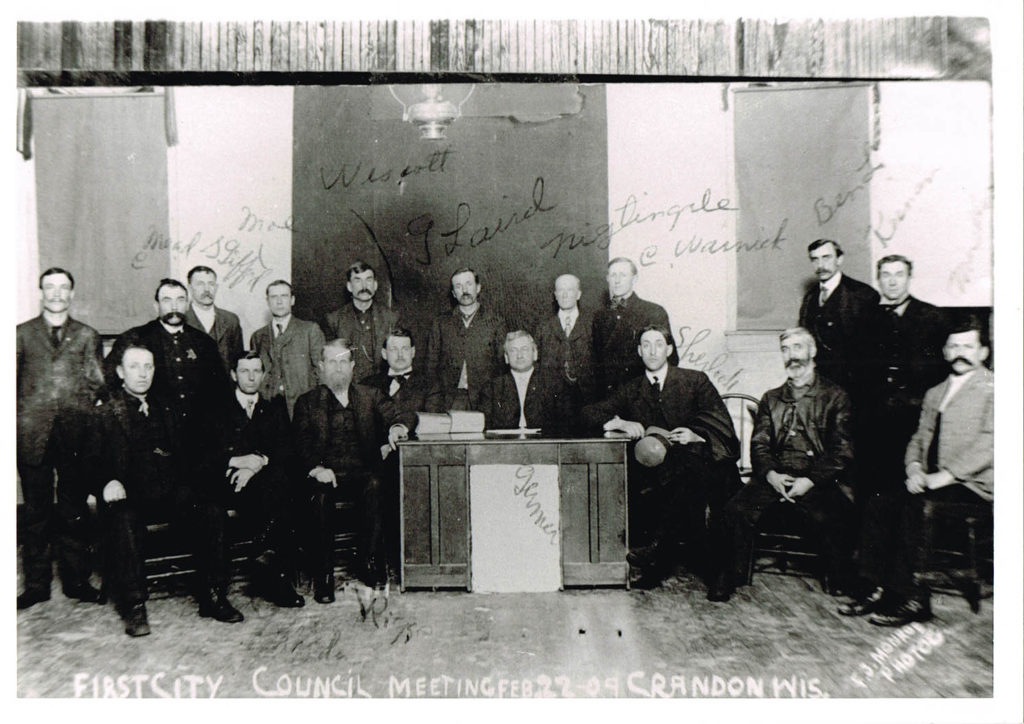
Crandon Hospital on North End of Metonga
One of the most interesting photos of the “North End” is a photo that includes the Crandon Hospital on the banks of Metonga. A close up photo of the Crandon Hospital can also be found in the Historical Society’s collection which includes 12-page promotional brochure. The publication date of this brochure is unknown, however, many of its photos are also reproduced in the 1907 Forest Republican.
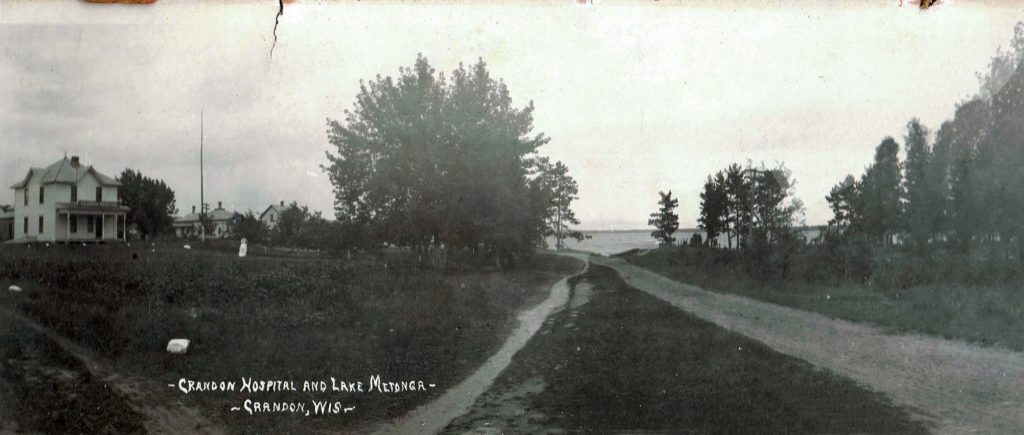
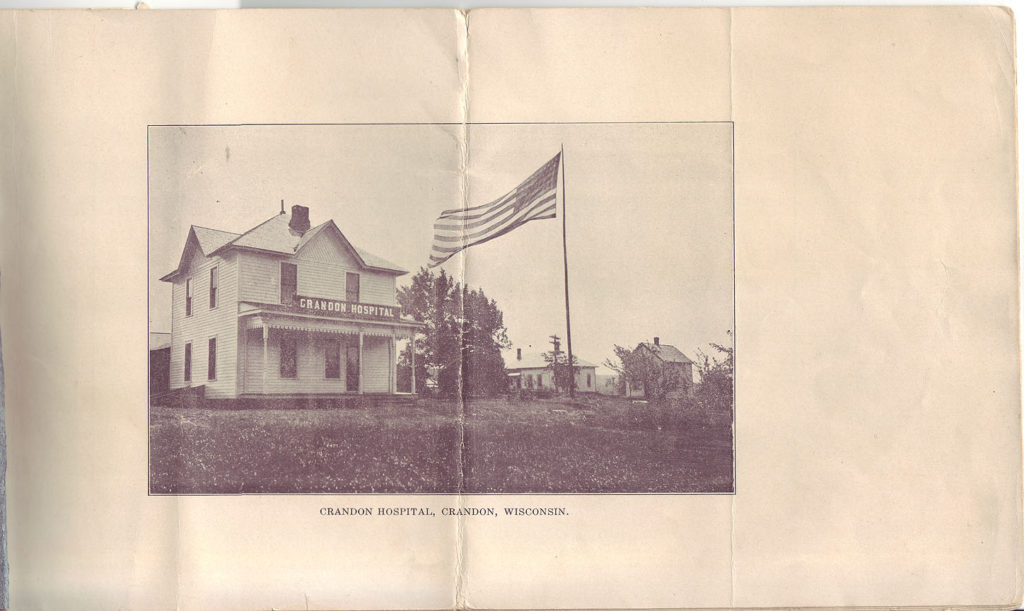
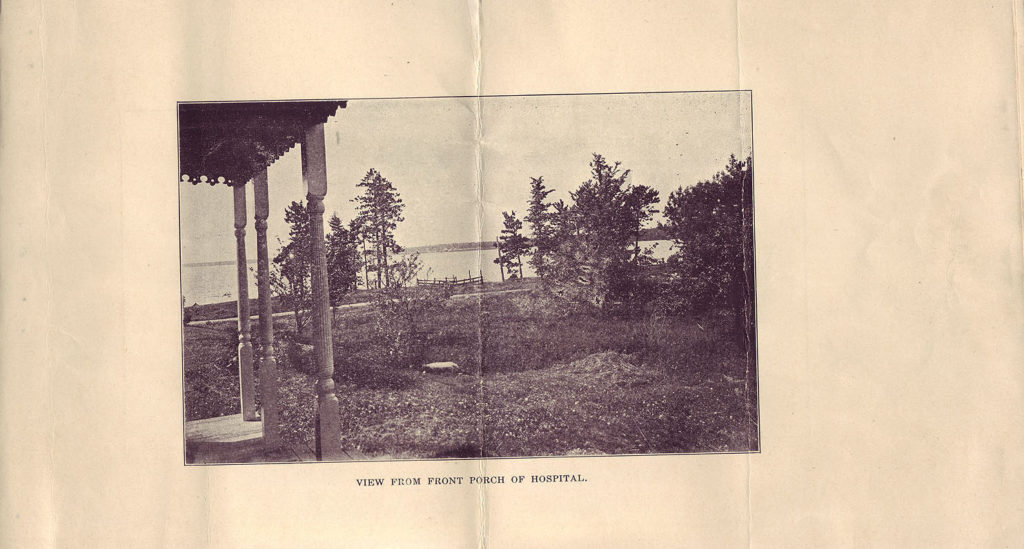
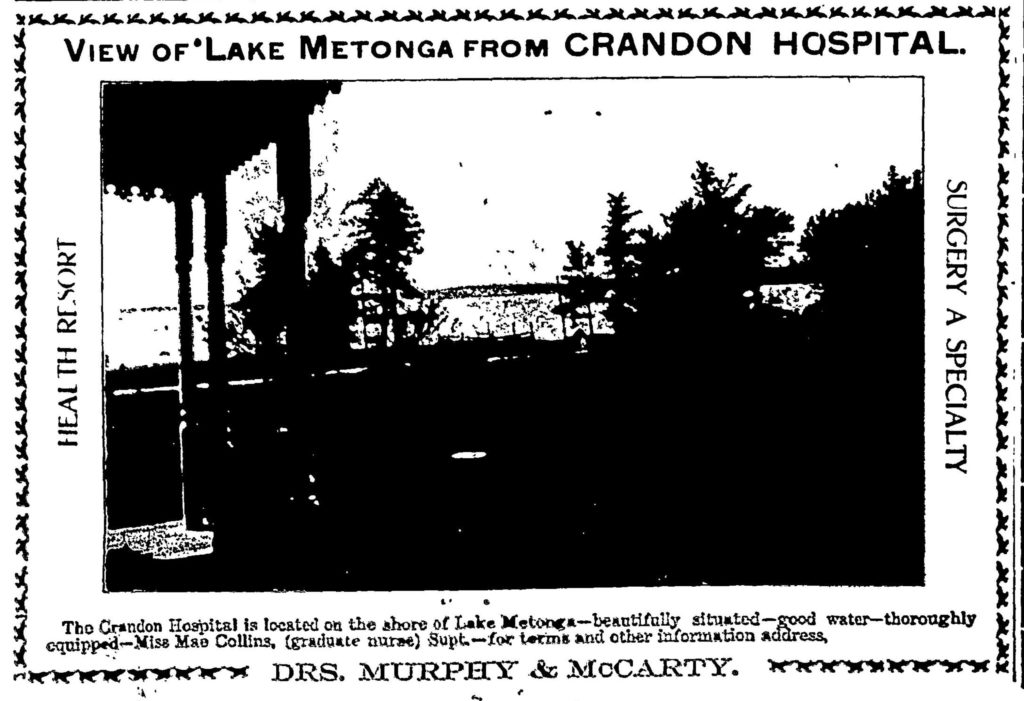
The location of the original Crandon Hospital building was recently brought to my attention by local resident Stacey Karcz. Last summer, prior to the digitization of the Forest Republican newspapers, Stacey brought me a copy of a 1907 newspaper article that was included in paperwork associated with her house on Lake Metonga. According to Stacy, the original Crandon Hospital building was moved across an icey Lake Metonga to the east shore a few years ago with her family still owning the residence. The article, not only has a great photo of the house, but also provides information about the illustrated book now in the Society’s possession.
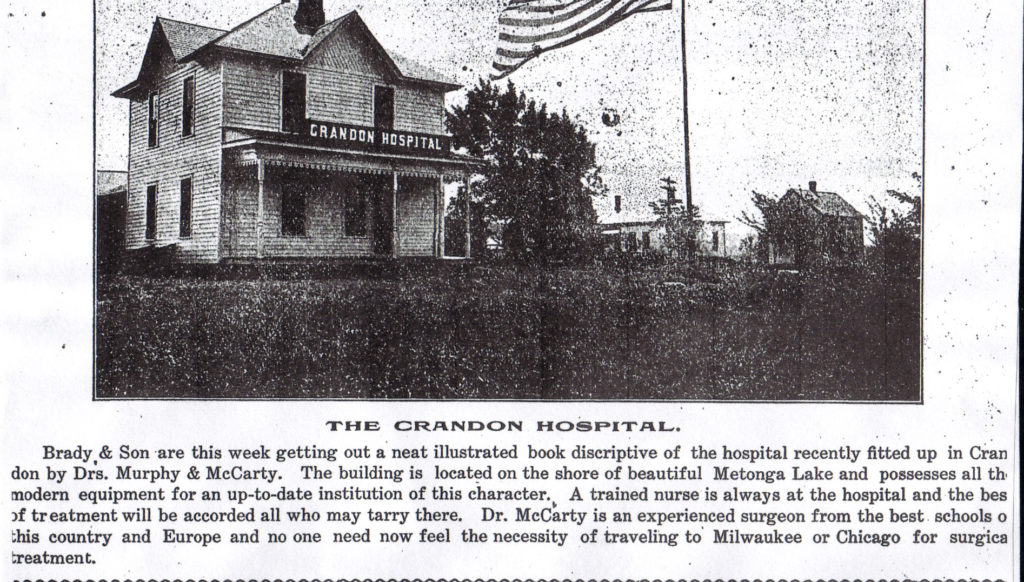
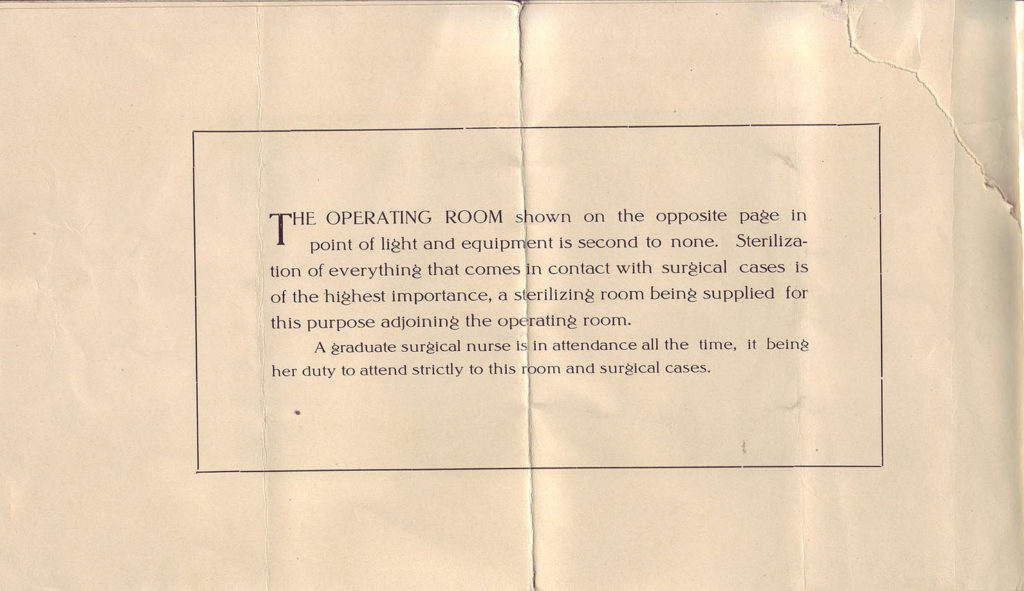
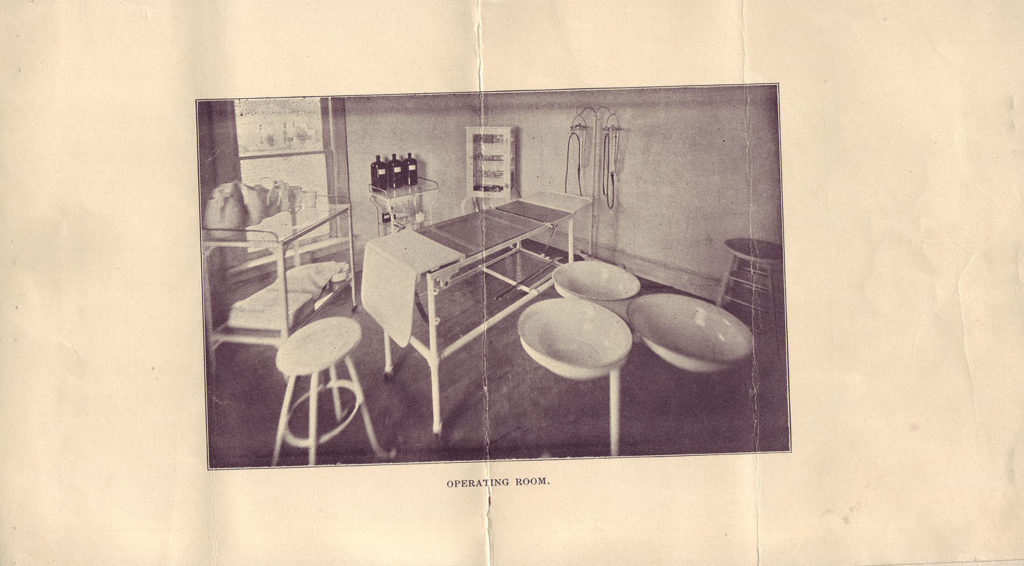
Photo mystery Solved
Those of you that attended the Metonga Presentation at the Crandon Hotel, may remember that during the presentation I also showed a photo from the M.S. Barker collection that raised questions about the original location of the Crandon Hospital. The photo, labeled “M.S. Barker home”, seems to show the same building including the same flag pole, as the Crandon Hospital photos. Zooming in you can see the same latticework and the same front porch. Yet, we know from Metonga research that M.S. Barker’s home was on the West side of Lake Metonga. Or so we thought! It appears that M.S. Barker owned not only West shore property, but he also owned North end property. According to the June 14, 1907 Forest Republican, Drs. Murphy & McCarty rented the Miles Barker house and grounds on “Lake avenue near the Lake shore” for hospital purposes. Mystery solved! We also now know that the building known as the Crandon Hospital was not built for purposes of a hospital but originally as a residence and that it was built prior to 1907. Excellent information for the current owners of the property.


That’s all for this week. Next week’s tour will take us to Echo Bay on Lake Metonga which, according to research, is now most commonly known as Glen Park.
